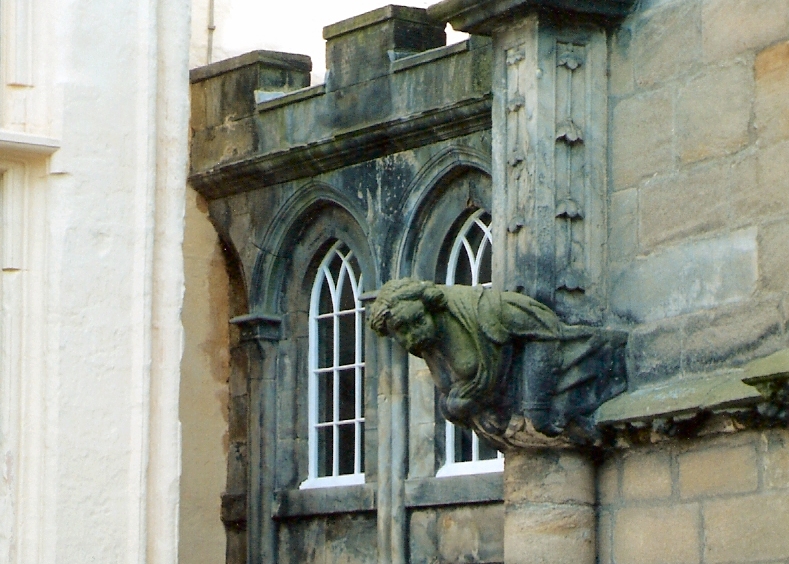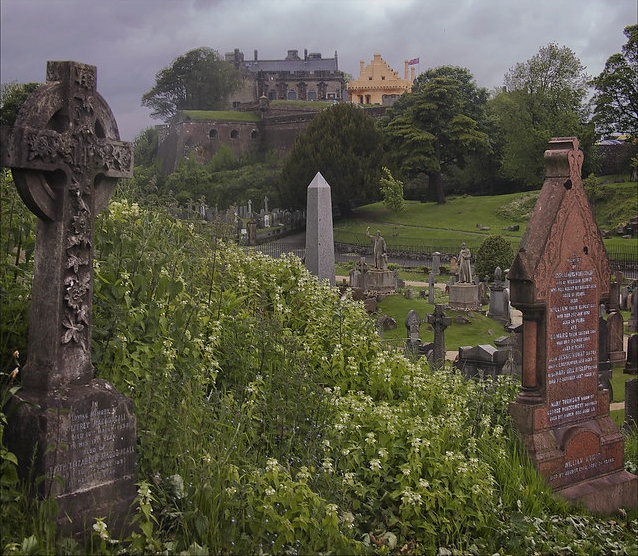
Consulting our watches, we're surprised to find that it's almost 4:00PM. We're hungry, but have another long drive ahead of us. We snack on the ever present Cadbury bars and spring water as we head south toward our bed and breakfast in Melrose. There is little traffic and we enjoy the landscape as we whoosh along on the motorway, passing a sign to Crichton Castle along the way – a site we plan to visit later in the week.
Of course the "restoration discussion" recommences now that we've all seen what progress has been made and I'm called upon to give my verdict.
I can easily see both points of view. Personally, I prefer the "lived in" look. The ravages of age are well earned and admired. On the other hand, there are a lot of castles in Scotland under the care of Historic Scotland. What harm is there in restoring one, especially this one which is so centrally located, to its former glory? Restoration gives the visitor a clearer picture of how it looked during its heyday and may encourage a higher volume of tourism which strengthens the economy.
I think back to where the North Gate, a twisting passageway that Robin informs me is purported to be haunted by a piper who strolls through at midnight, and the Great Hall connect. It's like looking at the face of a formerly beautiful movie star, who's only had one side of her face enhanced by plastic surgery. Sure, she looks better on the one side, but look a little closer and there's something gaudy and ghastly about the improvements that have been made. For some reason a mental picture of Bette Davis and Joan Crawford as they appeared in "Whatever Happened to Baby Jane" comes to mind.
Shaking myself mentally, I realize that I have to base my opinion on what touches me most. I remember the many gargoyles that embellish the walls of the fortress; side by side, I prefer the unrestored. Then I think back on the magnificence of the interior of the Great Hall. No longer dismal, dark and dank – it's difficult to dismiss the grandeur as unbecoming.
I decide that the interior of the buildings should be restored and the exterior left untouched. Of course it's too late, the exterior of the Great Hall having been completed. And since this has already been done, I think they shouldn't hold back, and should continue the restoration process until all of the buildings that make up this key to Scotland are reinstated to their previous condition.
There; the deciding vote between the three of us has been cast, for what it's worth. I am not unmindful that the natives of this land, in particular the residents of Stirling, must have opinions of their own. As we leave Stirling behind, I wonder how they feel about the castle's "new" look.

Almost all the present buildings in the castle were constructed between 1490 and 1600, when Stirling was developed as a principal royal center by the Stewart kings James IV, James V and James VI. The architecture of these new buildings shows an eclectic mix of English, French and German influences, reflecting the international ambitions of the Stewart dynasty.
In December 1593 Anne of Denmark decided to come to Stirling for the birth of her first child, and James ordered the palace which was in "ruin and decay" to be repaired. Prince Henry was born in the castle in 1594, and the present Chapel Royal was constructed for his baptism on 30 August. Probably built by William Schaw, the chapel completed the quadrangle of the Inner Close.
Like his predecessors Henry spent his childhood here under the 2nd Earl of Mar, until the Union of the Crowns of 1603, when his father succeeded as King of England and the royal family left for London.
Read more about Stirling Castle at Wikipedia.